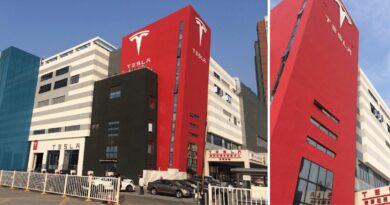Greece launches the largest bifacial solar farm in Europe
Greece this week inaugurated a 204-megawatt (MW) solar farm in Kozani, in the country’s Western Macedonia region. It’s the biggest solar farm with bifacial panels in Europe.
UnderstandSolar is a free service that links you to top-rated solar installers in your region for personalized solar estimates. Tesla now offers price matching, so it’s important to shop for the best quotes. Click here to learn more and get your quotes. — *ad.
Greece’s new bifacial solar farm
Prime Minister Kyriakos Mitsotakis officially opened the €130 million ($141.7 million) solar farm, which is expected to generate 350 GWh of electricity capable of powering 75,000 homes annually. It has 500,000 bifacial panels and will be connected to Greece’s power grid in the next couple of weeks.
German renewables developer Juwi, through its subsidiary Juwi Hellas, is the original developer of the Kozani solar farm. Juwi sold the solar farm to Hellenic Petroleum, Greece’s biggest oil refiner, in 2020. Hellenic Petroleum says it aims to have 1 GW of clean energy capacity in operation by the end of 2026.
Reuters notes:
Greece beat its 2020 goal by tapping renewables for 21.7% of its energy consumption, according to the European Union statistics office, and aims to increase the figure to 35% by 2030.
Mitsotakis said his government will speed up licensing procedures and was set to specify permits for the construction of large-scale offshore wind parks.
How bifacial solar panels work
[embedded content]
Bifacial, or double-sided, solar panels collect light on both sides. They can produce one-third more energy than monofacial solar panels. They are slim and need special racking in order to gain maximum exposure to the sun. The side of the panels not aimed toward the sun – the backsheet – can use light reflected off the ground or another material, and the lighter the surface – like sand – the more effective it is for the solar panel. Due to cost and the fact that they need to be mounted on the ground, bifacial panels are best for commercial or utility-scale use. EnergySage explains:
Because bifacial panels have more surface area to absorb sunlight, they have been shown to be more efficient than traditional panels. If bifacial modules are set up vertically, they can capture energy at two of the sun’s peak times: sunrise and sunset. Vertically set-up panels are also more resistant to weather like snow and sun that could cover a panel and block some of its efficiency. Bifacial solar panels are also more durable than traditional panels.
And bifacial panels paired with solar trackers can yield 27% more solar energy than a similarly sized system using monofacial panels, according to EnergySage.
Read more: Scientists develop ‘true’ bifacial solar cells with 29% power output
Subscribe to Electrek on YouTube for exclusive videos and subscribe to the podcast.
Source : Autonews.com




